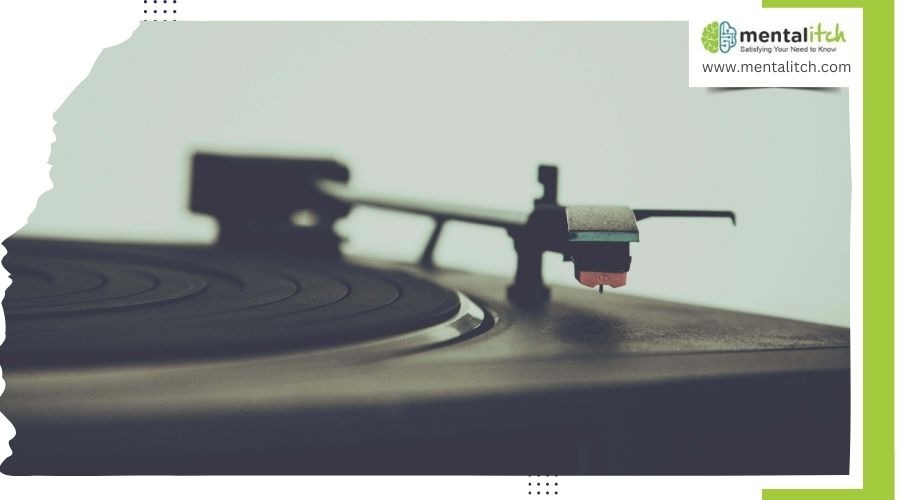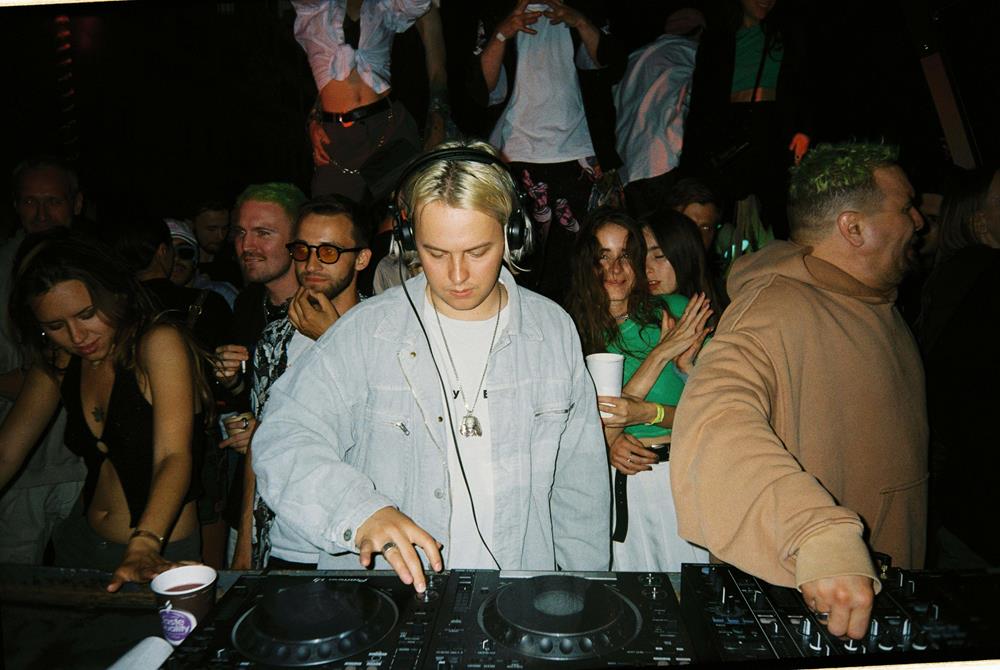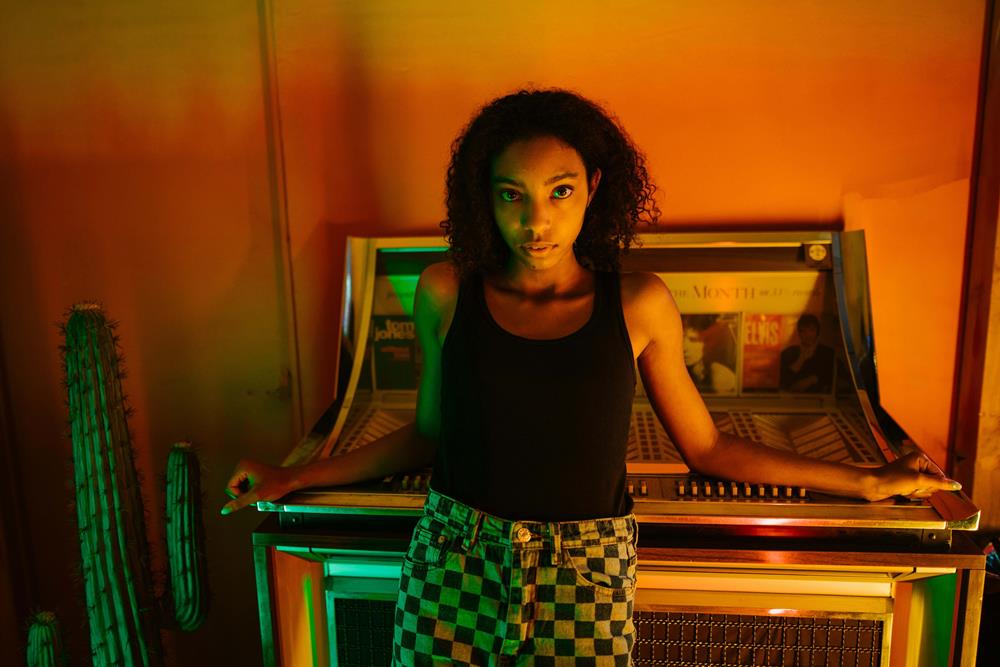1960s, a time when music wasn’t just tunes but a big change in how people felt and thought. Like a refreshing breeze introducing something entirely novel and different, the music of that era left an indelible mark. And guess what? The way folks listened to music was pretty cool too! From vinyl records spinning the beats of rock ‘n’ roll to the portable magic of cassette tapes, let’s explore how people grooved to the rhythms of change.
How Did People Listen to Music in the 60s?
Remember the traditional vinyl records, or ever seen one in pictures? Thats where the 60s music ranges back to! Lets explore more on other ways how people used to listen to music in the 1960s.
Vinyl Records
Back in the swinging 60s, if you wanted to vibe with the hottest tunes, you had to get friendly with vinyl records. These weren’t just round pieces of plastic; they were the rockstars of the music scene, stealing the show as the dominant format.
Vinyl records didn’t discriminate – they embraced all sorts of genres. From the soulful crooning of Motown to the electric twang of rock ‘n’ roll, you could find your musical soulmate on vinyl. It was like a musical buffet where everyone could pick their favorite flavor. Whether you were into the foot-tapping beats of pop or the rebellious spirit of rock, vinyl had it all.
Now, let’s talk about the experience. Listening to vinyl records was like going on a sonic journey. You’d carefully place the needle on the record, and as it gently made contact, the music would kick in – a warm, crackling symphony filling the room. There was something magical about the imperfections, the pops and hisses that made each play unique. It wasn’t just about the music; it was about the whole ritual – flipping the record, reading the album cover, and getting lost in the artwork.
Think about it like a musical date – you and your vinyl, sharing a moment. The album covers were like mini art galleries, telling a visual story that complemented the auditory one. And the joy of discovering a hidden gem while flipping through records – priceless! It wasn’t just about the sound; it was about creating memories, building a connection with the music.
Vinyl records were the heartbeat of the 60s, pulsating with the energy of an era that embraced change. They weren’t just a format; they were a culture, a lifestyle. Whether you were chilling at home with friends or throwing a groovy party, vinyl was there, setting the mood.
Radios
Radio stations were like superheroes, each with its unique vibe and playlist. Take, for instance, WLS in Chicago. It wasn’t just a station; it was a trendsetter. You tuned in, and bam! You were hit with the top hits, shaping your music taste like a sculptor with clay. And let’s not forget about WABC in New York – the powerhouse that brought the Beatles to the American airwaves, turning them into the sensations we know today.
Now, the hits. Radio DJs were the maestros of the airwaves, conducting a symphony of sounds. Picture this: you’re cruising down the street, and suddenly, the DJ drops “I Want to Hold Your Hand” by The Beatles. It’s not just a song; it’s a moment. DJs like Wolfman Jack and Cousin Brucie became household names, creating a connection between the music and the listener. It wasn’t just about playing the hits; it was about making you feel the music.
Let’s talk about DJ culture. These weren’t just voices on the radio; they were your musical companions. They’d chat with you, share stories, and inject a personal touch into the airwaves. DJs weren’t just playing songs; they were curating an experience. American Bandstand with Dick Clark wasn’t just a show; it was a Saturday ritual, showcasing the hottest acts and shaping the nation’s music taste.
Imagine waiting for your favorite song, fingers poised on the record button of your tape recorder, ready to capture that moment forever. DJ culture wasn’t just about playing tracks; it was about creating memories. It was the bridge between artists and fans, turning the radio into a communal space where everyone gathered to share the love for music.
Concerts
Now, concerts– they were the epicenters of this live music explosion. Woodstock, the granddaddy of them all, wasn’t just a festival; it was a pilgrimage. Half a million people, rain, mud, and legendary performances – it was a cosmic blend of music and counterculture. You had Jimi Hendrix rocking the anthem of a generation with his guitar, and Janis Joplin pouring her soul out in every note. Woodstock wasn’t just a festival; it was a revolution set to music.
And then there was Monterey Pop, a three-day magic carpet ride into the heart of the Summer of Love. Picture this: The Who smashing their instruments, Otis Redding bringing down the house, and Ravi Shankar introducing Western ears to the wonders of Indian music. It was a melting pot of sounds and styles, and the world was listening.
Now, let’s talk about trends. Concert experiences weren’t just about the music; they were about the spectacle. Light shows, psychedelic music and visuals, and mind-bending projections – it was a feast for the senses. Bands like Pink Floyd weren’t just playing music; they were creating immersive experiences. The 60s were all about breaking the mold, and concerts became a canvas for artists to paint sonic masterpieces.
Emerging from the underground scene, the “happening” concept took hold. It wasn’t just a concert; it was an event. Artists collaborated with light artists, poets, and even dancers to craft a total experience. Imagine attending a gig where music blended seamlessly with other art forms, creating a vibe that went beyond the stage.
Jukeboxes
In the 60s, jukeboxes were like music DJs hanging out in public spots. Picture walking into a diner or bar, and there it is – the jukebox, a common sight everywhere. It wasn’t just a music machine; it was the go-to DJ for the night, bringing beats to regular places.
People loved jukeboxes because they put the power in your hands. Drop in a coin, press some buttons, and bam – your favorite song starts playing. Whether you were into Motown’s smooth tunes or Elvis’s rockin ‘beats, the jukebox had you covered.
Now, the social side of things. Jukebox moments weren’t solitary gigs. Imagine a group of pals gathered around, taking turns to pick songs. It wasn’t just about the music; it was a group decision, making the jukebox a social hub. It wasn’t fancy – just friends, music, and good times.
And let’s not forget the thrill of discovering new tracks. Sipping your soda, chatting with friends, and suddenly a song comes on that grabs your attention. The jukebox was a surprise playlist, keeping things lively and interesting.
Shift to 8-Track Tapes
Let’s understand the 8-track tape era of the 60s – a time when music lovers had a new way to carry their favorite tunes.
First up, the emergence of 8-track tapes. Imagine this: Vinyl records were cool, but they weren’t exactly pocket-friendly. Along came the 8-track tape, a compact alternative that revolutionized how people listened to music on the go. It was like having a mini jukebox you could carry with you.
Consumer adoption was swift. Picture folks popping 8-track tapes into their players in cars, homes, and even portable devices. It wasn’t just a trend; it was a lifestyle choice. Suddenly, you had the power to create your own mixtapes, selecting your top tracks and playing them seamlessly.
Now, let’s talk limitations. While 8-track tapes were convenient, they had their quirks. Picture this: Mid-song interruptions, sometimes weird pauses between tracks – it wasn’t always a smooth ride. The tapes had limitations in terms of audio quality and flexibility. It was a trade-off – portability versus perfection.
The 8-track era was brief but impactful. For a short time, it was the go-to music format, offering a portable and personalized music experience. Picture road trips with friends, the car stereo pumping out your carefully curated 8-track mix. It was a snapshot in time when the music landscape embraced change, showing that people were ready for a shift from the vinyl routine.
Final Words
Music in the 1960s wasn’t just about soundtracks; it was the heartbeat of a revolution. From vinyl’s warm crackle to the portable magic of 8-tracks, each format carried a piece of the era’s spirit. Whether you were belting out Beatles tunes or curating jukebox moments, music became a shared experience. As the needle dropped and the 8-tracks rolled, the sounds of change echoed. The 60s were a wild ride through genres, festivals, and social jukebox gatherings. So, when you hear those timeless Beatles melodies today, remember, they’re more than songs – they’re echoes of a groovy revolution.



